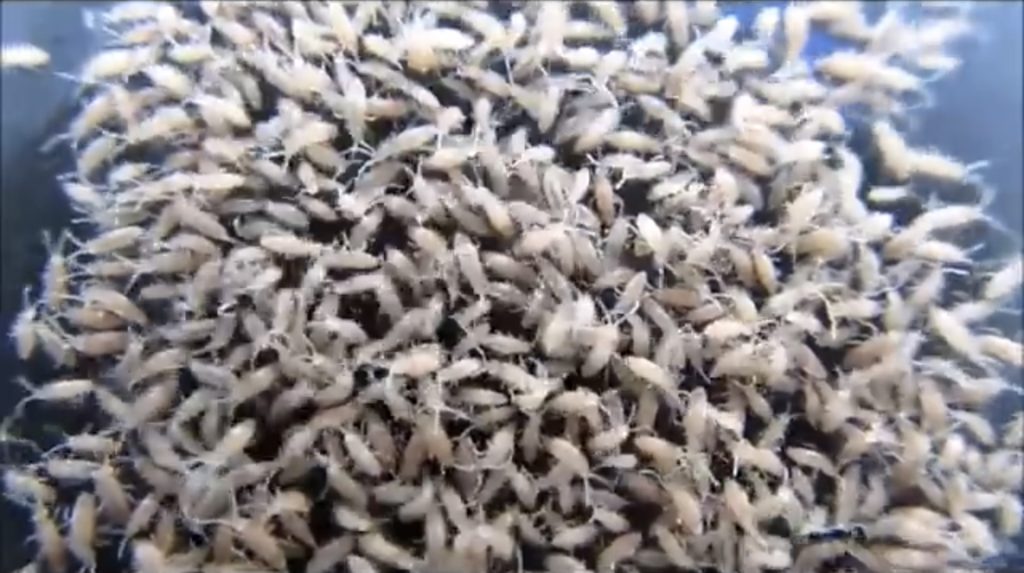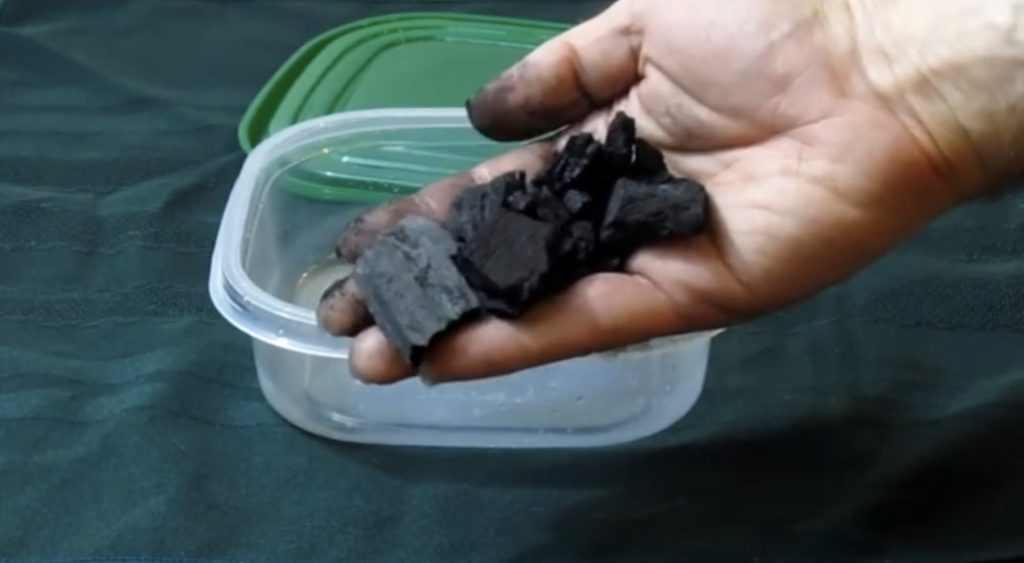
Springtails are tiny invertebrates that make a great live food for small surface-feeding fish, or tiny amphibians such as newly metamorphosed froglets. Springtails also serve an an excellent cleanup crew for a variety of reptiles, amphibians, and invertebrates, from geckos to dart frogs to millipedes. Here is how to culture your own springtails.
First, you will need a starter culture. Any company that sells dart frog supplies and/or dart frogs will likely offer springtails. Some aquarium hobbyists will have them too, especially killifish keepers. You can always contact me, of course.
Supplies for a Springtail Culture:
A plastic food saver container with a tight-fitting lid. I use these exact containers, but I generally buy them at the dollar store to save money:
100% Natural hardwood lump charcoal. It is MUCH cheaper if you buy it at the hardware store, or wherever you buy supplies for barbecue grills:

Just make sure it is natural lump charcoal, not briquettes, as they can have toxic additives.
You will also need some distilled or spring water, or at least filtered or dechlorinated water.
Last, you’ll need springtail food. Springtails can eat a lot of different things. In the wild, they specialize in eating various fungi. In captive culture they can live on active dry yeast granules, the fungus that grows on cooked or dry rice grains, etc. I have found the best results with the following recipe:
4 parts nutritional yeast
2 parts green pea protein
1 part Spirulina powder
A dash or two of Repashy Calcium Plus
(If you just need a small amount, I also sell this food)
Mix the ingredients well, (quantities are approximate) and keep them in a shaker of some sort. I use a shaker container that originally contained cake-decorating sprinkles. The holes in the shaker are large enough to allow the flakes of nutritional yeast through.
To set up the culture, rinse out the container well. I usually use a little white vingegar to clean it out. Open the bag of charcoal, and carefully-avoid inhaling any carbon dust-find an assortment of small charcoal pieces to use as the base layer. Then, find some larger, flatter pieces to rest on the surface layer. Add some of the distilled or otherwise purified water to the culture container, until it is about 1.5 to 2 inches deep. To minimize the risk of pestsmand to help wet the charcoal, I will often microwave the charcoal along with the water for about one minute, but if you do so, make absolutely sure that there is no dry charcoal touching the plastic. The charcoal must either be under the water, or not touching the plastic, or you run the risk that it will melt the plastic it touches. I know this from first-hand experience.
Let the charcoal and water cool, and then add your starter springtails. Secure the lid. The lid does not require ventilation if you are going to open the culture every day or two. Your culture is done! It is now time to feed your springtails.
Feeding the Springtails
With the shaker, try to distribute a light, thin layer of food all over the top layer of charcoal. Mist the food lighly with purified water, as springtails prefer moist food. Springtails appreciate food being available at all times, and will produce much more prolifically if fed often. I feed my springtails once or twice a day, misting each time. The food is usually gone or nearly gone by the time is feed them again.
Harvesting Springtails
There are many ways to harvest springtails, but by far the easiest is to pick up a couple of the large, flat pieces of charcoal on the top layer of the culture container and tap them together over a waiting collection container. This process can be repeated with different pieces of charcoal, which are then placed back into the culture. It’s that easy!
Maintaining a Springtail Culture
Springtail cultures require very little maintenance beyond frequent feeding and misting. Make sure there is approximately an inch of water at the bottom of the culture at all times, and be sure to open the culture every day or so to allow for gas exchange. A culture maintained in this manner can last for years without ever needing additional maintenance. I do recommend keeping multiple culture containers going at all times, as occasionally a culture will decline for no apparent reason. If a culture does crash, dump everything out, run it through the dishwasher to kill possible pests, rinse it thoroughly to remove all traces of detergent, and start again with fresh charcoal.
For more on culturing springtails, check out my ebook:
For quick reference forFor quick reference p, here is my video tutorial on culturing springtails. It’s older, but the method clearly works:
I am a participant in the Amazon Services LLC Associates Program, an affiliate advertising program designed to provide a means for sites to earn advertising fees by advertising and linking to amazon.com. In other words, I earn a small commission when you use that affiliate link, at no cost to you.
